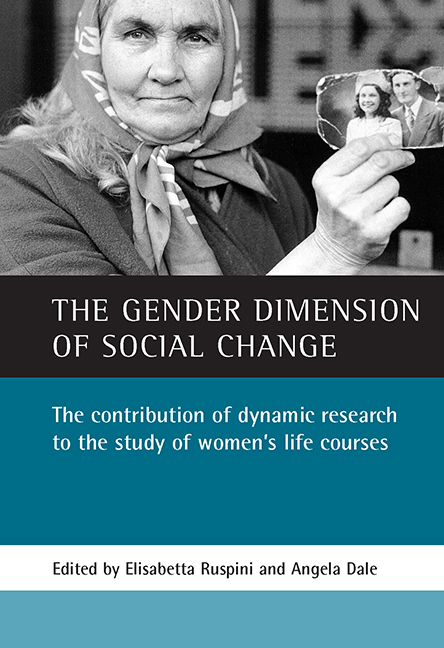 The Gender Dimension of Social Change
The Gender Dimension of Social Change nine - Gender wage differentials in Britain and Japan
Published online by Cambridge University Press: 20 January 2022
Summary
Introduction
Women still earn less than men. However, a reduction of the gender pay gap has resulted through anti-discrimination legislation, enforcement of ‘equal pay for equal work’ and ‘equal pay for work of equal value’, as well as working women’s movements, in all industrialised countries over the past few decades.
Japan has the widest gender differences in pay among industrialised countries. Between 1970 and 1999, the gap in men’s and women’s full-time average monthly earnings has decreased only slowly (Table 9.1). The persistence of these large gender wage differentials has led to submissions from the International Labour Office (ILO) to the Japanese government that the gap should be reduced. Although the gender wage gap has decreased more rapidly in Great Britain, nonetheless it remains substantially higher than countries such as Norway, Sweden, and Australia, where women’s full-time hourly earnings are over 90% those of men’s.
A noteworthy difference between Britain and Japan is the basis on which pay rates are determined. In Japan, seniority, age and personal appraisals are more important than job content in determining wages. By contrast, in Britain earnings are assumed to be more closely related to the content of the job, although performance related pay is becoming increasingly important (IRS/EOC, 1992).
A number of economic and social theories have been proposed to explain women’s lower earnings relative to men. These fall into two main categories: neo-classical theory, and non-neoclassical theory. Neo-classical theories include human capital, non-pecuniary, taste for discrimination, statistical discrimination and the crowding hypothesis. These theories perceive the creation and maintenance of low-paid work as the result of less human capital investment, or innately lower productivity, imperfect competition in the labour market, discrimination by employers, other employees or customers, or the choice of individual workers. On the other hand, theories such as labour market segmentation, patriarchy and the family wage – all of which reject neo-classical theory – make much of the historical viewpoint and attribute the gender pay gap to institutional, social and cultural factors, the process of uneven development of the capitalist economy, or women’s position in the family.
- Type
- Chapter
- Information
- The Gender Dimension of Social ChangeThe Contribution of Dynamic Research to the Study of Women's Life Courses, pp. 189 - 228Publisher: Bristol University PressPrint publication year: 2002
